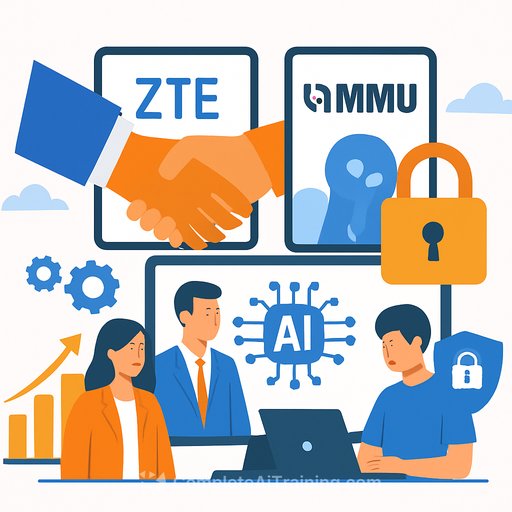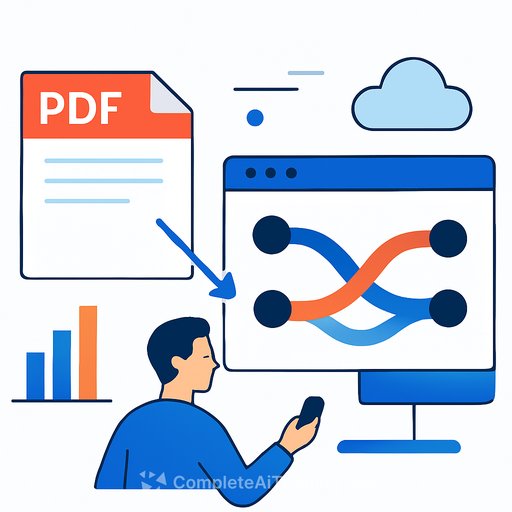Risk Reality Check: Six Generative AI Threats That Demand Action
Most development teams are marching into a preventable AI mess. ASEAN's Expanded Guide on AI Governance and Ethics flags six risks that are already affecting projects across low- and middle-income countries. If you build or deploy AI, this is your checklist. Treat it like change control, not theory.
1) Mistakes and Anthropomorphism
GenAI can sound confident while being wrong. People still treat those outputs as expert advice, especially in high-stakes settings.
- Make human oversight mandatory for critical use cases (health, legal, finance, benefits).
- Bake in verification workflows: double-source sensitive outputs and require sign-off.
- Log prompts and responses for auditability and post-incident review.
2) Factually Inaccurate Responses and Disinformation
Generated content can spread faster than your fact-checkers. Elections, health campaigns, and crisis comms are prime targets.
- Adopt content provenance and watermarking for anything at scale.
- Gate public-facing outputs behind a factual backstop (knowledge bases, retrieval, policy checks).
- Stand up rapid review lanes for time-sensitive comms.
C2PA is a practical starting point for cryptographic provenance.
3) Deepfakes and Impersonation
Voice cloning and realistic phishing are now routine. Humanitarian and public sector inboxes are getting hit hard.
- Use strong identity controls: FIDO2, phishing-resistant MFA, and signed comms for executives.
- Deploy detection and take-down workflows for deepfakes and spoofed domains.
- Run continuous security testing and red-teaming against social engineering flows.
4) Intellectual Property Infringement
Training data and generated outputs can trigger IP claims. Most teams don't budget for that fight.
- Demand transparency on model training data and licensing from vendors.
- Set internal rules for third-party content, code reuse, and dataset ingestion.
- Add indemnity and IP clauses to your procurement templates.
5) Privacy and Confidentiality
Models can memorize and leak sensitive data. Attackers can also reconstruct details from seemingly harmless outputs.
- Apply privacy-by-design: minimize, mask, and tokenize data before training or inference.
- Block sensitive inputs at the prompt layer with pattern and policy filters.
- Use differential privacy or synthetic data where feasible.
6) Propagation of Embedded Biases
Western-trained models can reflect cultural biases that don't fit ASEAN contexts. The harm is subtle until it isn't.
- Localize: fine-tune on regional data and evaluate with in-country experts.
- Add bias checks to CI/CD and monitor post-deployment outputs by segment.
- Provide clear user feedback paths and fast rollback options.
Beyond Risk Assessments: What To Implement Now
Accountability and Shared Responsibility
GenAI lives across a value chain: model developers, integrators, deployers, and end users. Vague roles create gaps-and incidents.
- Map responsibilities end-to-end (RACI) across your AI stack and partners.
- Align on incident ownership, SLAs, data duties, and audit rights before go-live.
- Mirror cloud-style shared responsibility models for clarity.
Regional Data Ecosystems
Models like ThaiLLM and PhoGPT show why local data and culture matter. Stop assuming a generic model will fit every context.
- Fund local datasets, benchmarks, and community evals.
- Prefer regionally fine-tuned models for production workloads.
- Measure outcomes by demographic and language, not averages.
Testing and Assurance at Scale
You can't test a safety case with ad-hoc prompts. Treat GenAI like any other high-stakes system: disciplined, repeatable, measurable.
- Adopt standardized evals for safety, security, bias, and factuality before deployment.
- Automate red-teaming and regression tests in CI/CD.
- Use open tooling where possible and publish test scopes for accountability.
Look into initiatives like the AI Verify Foundation for test frameworks and community tooling.
Content Provenance and Transparency
People need to know what's AI-generated and why they should trust it. Transparency reduces guesswork and backlash.
- Mark AI-generated media with cryptographic provenance and watermarks.
- Disclose model usage, data sources, and known limitations in user-facing contexts.
- Keep a public model card or system sheet for high-impact services.
The Implementation Imperative
Here's the shift: move from pilots to policy-backed operations. ASEAN's guidance points to three moves you can start this quarter.
- Make governance local: Write policies with in-country experts, languages, and norms in mind.
- Invest in capacity: Build internal skills for testing, red-teaming, and evaluation. Don't outsource the whole brain.
- Be transparent: You don't need to reveal source code-just be clear about usage, data, and limits so end users can make informed decisions.
90-Day Starter Plan
- Stand up an AI risk register and shared responsibility matrix with your vendors.
- Launch a baseline eval pipeline: hallucination rate, bias checks, prompt injection tests, and privacy leakage scans.
- Implement provenance labeling for all outward-facing AI content.
- Train product, security, and ops teams on incident response for AI-specific failures.
If your team needs structured upskilling on AI safety, testing, and deployment workflows, browse role-based programs at Complete AI Training.
Your membership also unlocks:






